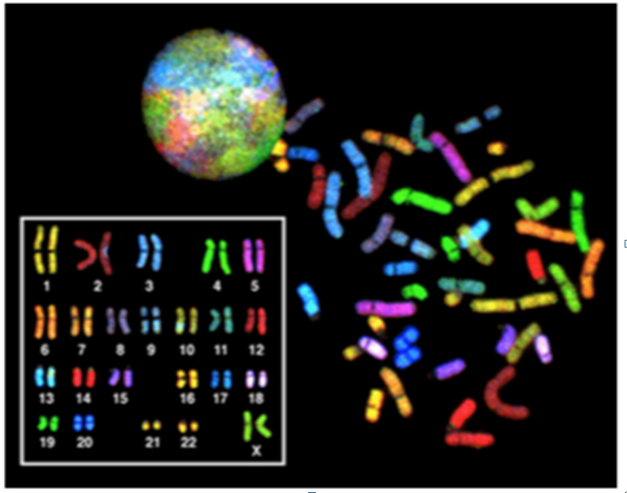Which of these plant tissue types most closely corresponds to the "typical" unspecialized plant cell?
A. parenchyma
B. sclerenchyma
C. phloem
D. xylem
E. collenchyma
Answer: A
You might also like to view...
The photosystem channels the excitation energy gathered by absorption of light by any one of the pigment molecules to a specific reaction center chlorophyll, which in turn passes the energy to
A. photosystem I. B. photosystem II. C. the primary electron acceptor. D. the secondary electron center. E. cytochrome.
In a tetraploid species, a euploid individual would have ___sets of chromosomes.
A. 2 B. 4 C. 6 D. 8 E. 2n+2
Which statement about this diagram is true?

a. The chromosomes of a human egg cell are shown.
b. The colors correspond to chromatin density.
c. The chromosomes arranged by size and order are the karyotype.
d. The chromosomes of a prokaryote cell are shown.
An extraterrestrial organism (ET) is discovered whose basic cell biology seems pretty much the same as that of terrestrial organisms except that it uses a different genetic code to translate RNA into protein
You set out to break the code by translation experiments using RNAs of known sequence and cell-free extracts of ET cells to supply the necessary protein-synthesizing machinery. In experiments using the RNAs below, the following results were obtained when the 20 possible amino acids were added either singly or in different combinations of two or three: RNA 1: 5?-GCGCGCGCGCGCGCGCGCGCGCGCGCGC-3? RNA 2: 5?-GCCGCCGCCGCCGCCGCCGCCGCCGCCGCC-3? Using RNA 1, a polypeptide was produced only if alanine and valine were added to the reaction mixture. Using RNA 2, a polypeptide was produced only if leucine and serine and cysteine were added to the reaction mixture. Assuming that protein synthesis can start anywhere on the template, that the ET genetic code is nonoverlapping and linear, and that each codon is the same length (like the terrestrial triplet code), how many nucleotides does an ET codon contain? (a) 2 (b) 3 (c) 4 (d) 5 (e) 6